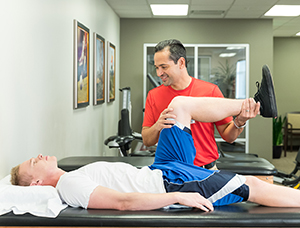Your knee is the largest joint in your body, with the kneecap, also known as the patella, serving as the protective bone for this crucial joint. The patella contributes to the strength and structure of the knee. It enables safe bending and straightening of your legs. The knee involves numerous working parts and bears a large load. It is exposed to various problems. If you face any difficulties or discomfort with your kneecap, see your healthcare provider for diagnosis and treatment. Identifying the right treatment is important. Some issues may improve with the assistance of physical therapy, while others may need surgery. Getting timely medical advice can help address knee concerns.
Whatever your goals, your healthcare provider may advise that you see a physical therapist (PT). They can help you reach your goals with a 3-stage rehab program. This program can get you back to your normal activities. It's done by helping your knee heal and by exercising your knee and its supporting muscles.
Stage 1
Starting to heal
You’ll work with your PT or healthcare provider to reduce pain and swelling. Then you can start to increase your knee’s range of motion.
Stage 2
Improving your knee's function
You’ll start flexibility and strengthening exercises. These help build up the muscles around your knee. To help improve exercises that may cause pain, you will be taught what specific exercises to do and which not to do to prevent more damage. Your PT may also teach you how to tape or support the affected knee and if shoe inserts may be helpful.
Stage 3
Practicing everyday moves
You’ll get your knee and leg ready for everyday activities. You’ll work to relearn movements and improve your knee's function. To help you get back to a favorite activity, your PT may retrain how your knee or hip moves. This is known as coordination training. It helps to ease knee pain and build muscle.


